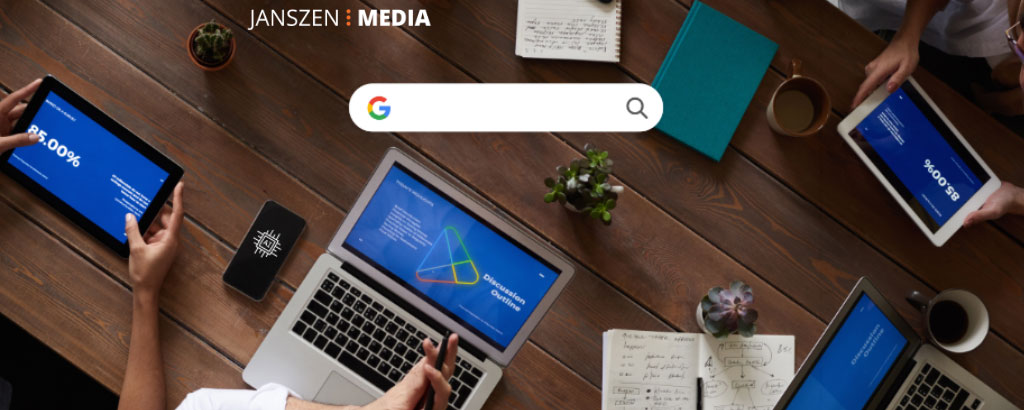


Strategies to Create an Impactful Video Advertisement
April 11, 2023


Adjusting Web Design for Mobile Devices: Catering to the Mobile Generation
July 1, 2023In the fast-paced world of digital advertising, staying ahead of the curve is essential for businesses to remain competitive. With advancements in artificial intelligence (AI), Google Ads has evolved to offer innovative features that can revolutionize online advertising. In this blog post, we will explore the future of Google Ads and discuss how embracing AI-driven innovations can help businesses thrive in the ever-changing landscape of digital marketing.
Artificial Intelligence (AI) and Machine Learning
- Google Ads uses AI to optimize and personalize advertising
- AI advancements enhance ad targeting, bidding, and performance
Google Ads is leveraging the power of AI and machine learning to enhance advertising effectiveness. AI-powered features like Smart Bidding, Smart Campaigns, and Responsive Search Ads enable advertisers to optimize their campaigns automatically and deliver personalized experiences to their target audience. As AI continues to advance, we can expect even more sophisticated algorithms and predictive models that can improve ad targeting, bidding, and performance.
Voice Search and Smart Speakers
- Voice search is popular with smart speakers and assistants
- Optimize Google Ads for voice search to stay competitive
- Use long-tail keywords and conversational language in ads
- Target users based on device preferences for personalized ads
With the rise of smart speakers and voice assistants like Amazon Echo and Google Home, voice search has become increasingly popular. Optimizing your Google Ads campaigns for voice search queries can give you a competitive advantage. Consider incorporating long-tail keywords and conversational language into your ad copy to align with voice search queries. Additionally, targeting users based on their device preferences, such as mobile or smart speakers, can help you tailor your ads to their specific needs.
Visual and Video Ads
- Visual content is key in the digital landscape
- Google Ads offers various visual and video ad formats
- Compelling visuals and engaging videos capture attention
- Video ads effectively convey brand messages and drive engagement
Visual content is becoming more prominent in the digital landscape. Google Ads offers various formats for visual and video ads, including YouTube, display ads, and responsive display ads. Incorporating compelling visuals and engaging videos into your ads can capture the attention of your audience and deliver a more immersive experience. As video consumption continues to rise, leveraging video ads can help you convey your brand message effectively and drive higher engagement.
Local and Hyper-Targeted Advertising
- Hyper-targeted ads reach specific locations and demographics
- Google Ads offers advanced targeting options
- Focus ad spend on most relevant audience
- Use Google Maps and local search ads to target nearby customers
Hyper-targeted advertising allows businesses to reach customers in specific geographical locations or specific demographics. Google Ads provides advanced targeting options, including location targeting, demographic targeting, and affinity audiences. By utilizing these features, you can focus your ad spend on the most relevant audience for your business. Additionally, Google Maps and local search ads enable you to target potential customers based on their proximity to your physical store, increasing foot traffic and driving local sales.
Cross-Device and Cross-Channel Integration
- Integrate Google Ads across devices and channels for a seamless experience
- Use cross-device conversion tracking and cross-channel remarketing
- Optimize campaigns and budgets based on integrated data
Consumers today use multiple devices and channels to interact with brands. To create a seamless user experience and optimize your advertising reach, it’s essential to integrate your Google Ads campaigns across devices and channels. Utilize features such as cross-device conversion tracking, cross-channel remarketing, and data-driven attribution to understand how users engage with your ads across different touchpoints. This integration allows you to optimize your campaigns and allocate your budget effectively.
Privacy and Data Protection
- Stay compliant with privacy regulations like GDPR
- Adopt privacy-focused advertising strategies for user trust
- Prioritize transparency and user consent
With growing concerns about data privacy, user consent, and regulations like the General Data Protection Regulation (GDPR), Google has been taking steps to enhance privacy measures. It’s important to stay updated with privacy policies and ensure compliance with regulations to maintain user trust. Adapting to privacy changes and adopting privacy-focused advertising strategies can help you build a transparent and trustworthy relationship with your audience.
As the digital advertising landscape continues to evolve, staying ahead of the curve is crucial for success. Embracing the future of Google Ads means leveraging AI and machine learning, optimizing for voice search and visual ads, targeting hyper-local audiences, integrating across devices and channels, and prioritizing privacy and data protection. By embracing these trends and innovations, you can unlock the full potential of Google Ads and drive impactful results for your business. Partnering with a knowledgeable and experienced digital marketing agency like Janszen Media can ensure that you stay at the forefront of Google Ads advancements and achieve long-term success in your online advertising efforts.



